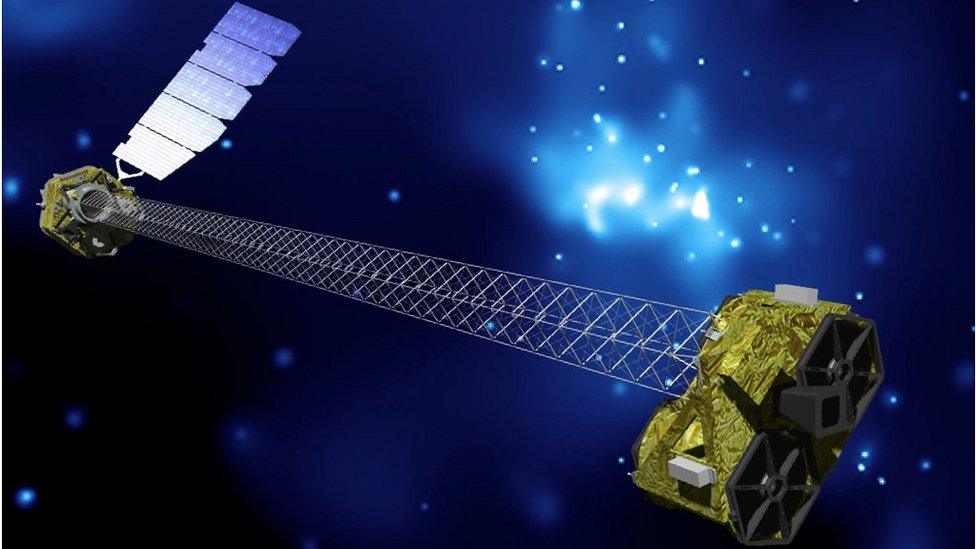Sun's sizzling X-rays photographed from space
- Published
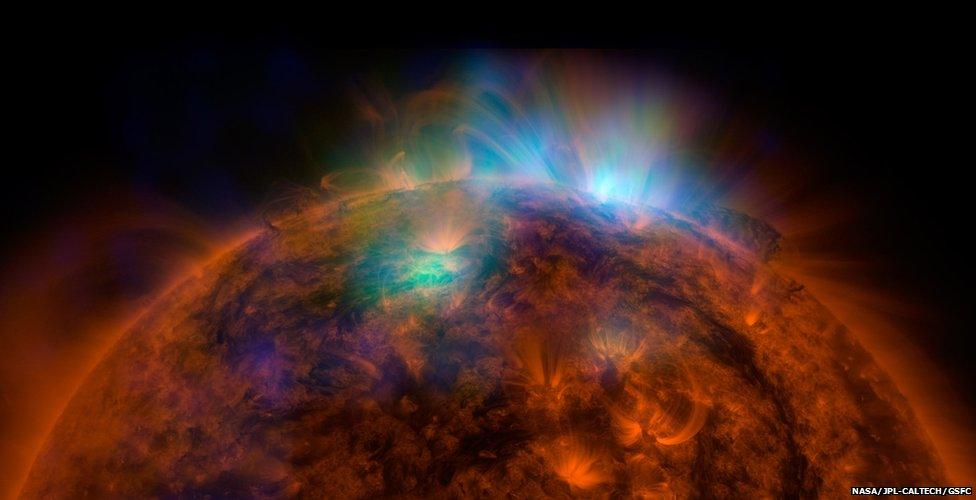
An "X-ray eye" designed to study distant galaxies and black holes has turned its attention to our own star and snapped a remarkable portrait.
Nasa's Nuclear Spectroscopic Telescope Array (Nustar), launched into orbit in 2012, views the universe in very high-energy X-rays.
Now on an extension to its original two-year mission, Nustar has already measured how fast black holes spin.
This image proves that it can gather data about the Sun.
Unique view
Because of its very high sensitivity, Nustar could solve some long-standing puzzles, such as whether "nanoflares" exist.
These proposed smaller versions of the Sun's giant flares could help explain why its outer atmosphere is many times hotter than its surface - a decades-old question.
Physicists first thought of using Nustar to study the Sun when it was already under construction.
"At first I thought the whole idea was crazy," said the mission's principal investigator Prof Fiona Harrison, from the California Institute of Technology.
"Why would we have the most sensitive high energy X-ray telescope ever built, designed to peer deep into the universe, look at something in our own back yard?"
But she was eventually convinced by Prof David Smith, a solar physicist at the University of California, Santa Cruz.
"Nustar will give us a unique look at the Sun, from the deepest to the highest parts of its atmosphere," said Prof Smith, a solar physicist at University of California, Santa Cruz.
This is only possible because in the very high-energy X-rays that Nustar "sees", our sun does not shine as brightly as it does in other wavelengths. That brightness would probably damage the detectors of other telescopes like Nasa's Chandra X-ray Observatory.
As well as probing the Sun, the Nustar team will also use the mission extension, which runs to 2016, to continue studying more far-flung objects including black holes and supernova remnants.
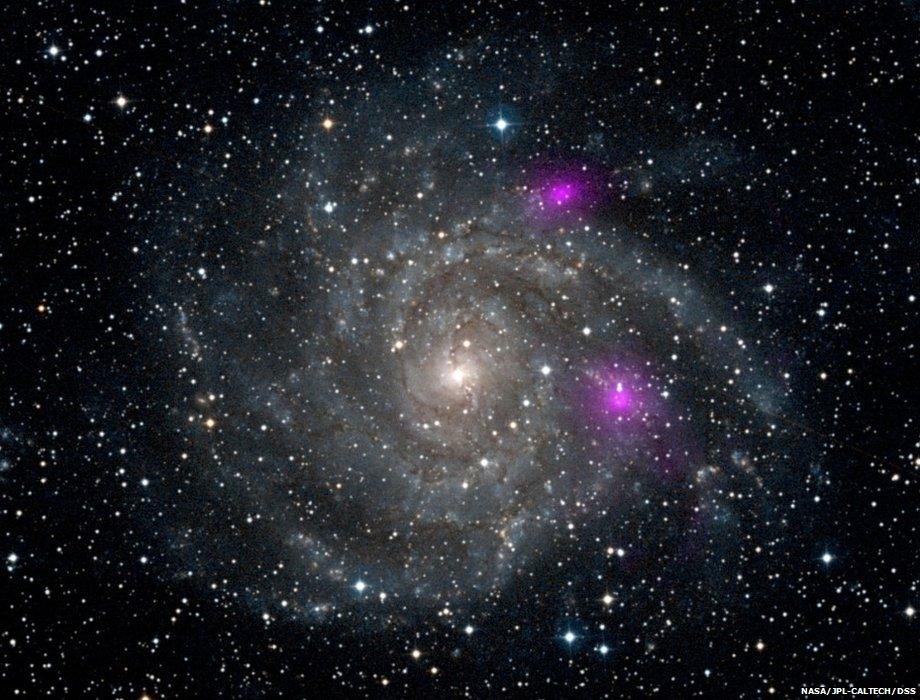
In 2012 Nustar recorded the high-energy X-rays (shown in magenta) emitted by two black holes near the distant spiral galaxy IC 342
- Published11 December 2013
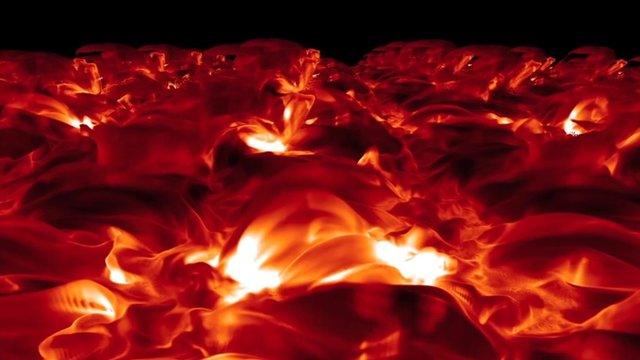
- Published17 May 2013
- Published8 January 2013
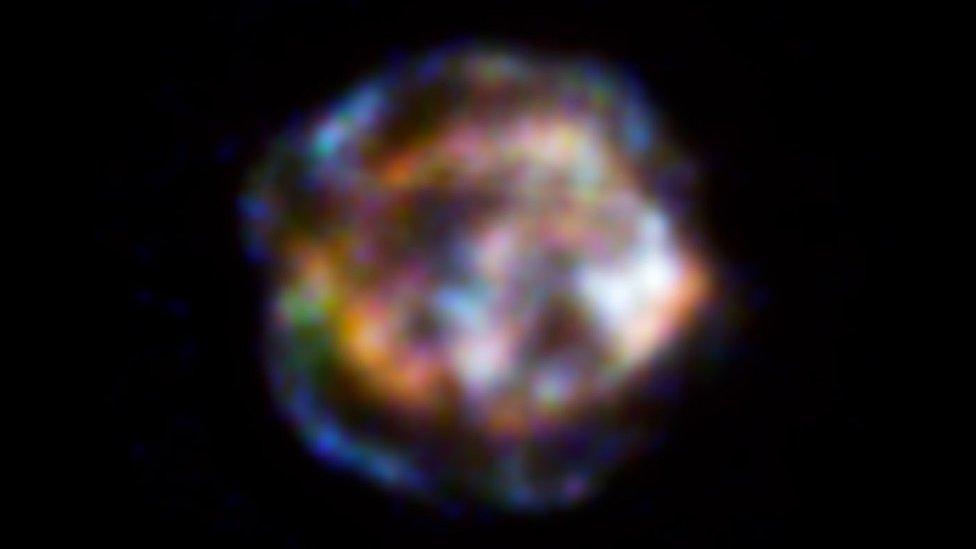
- Published27 February 2013
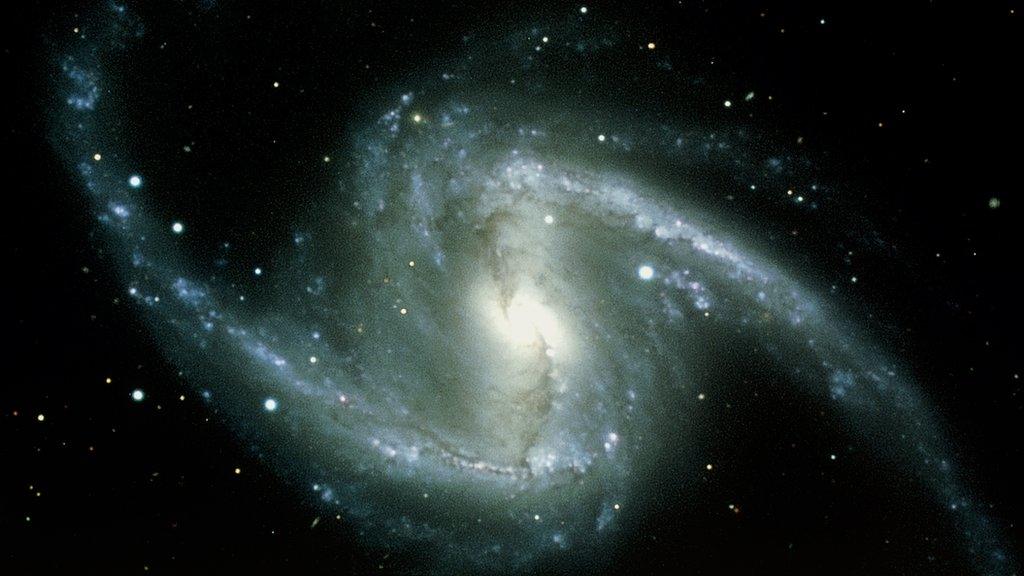
- Published13 June 2012
